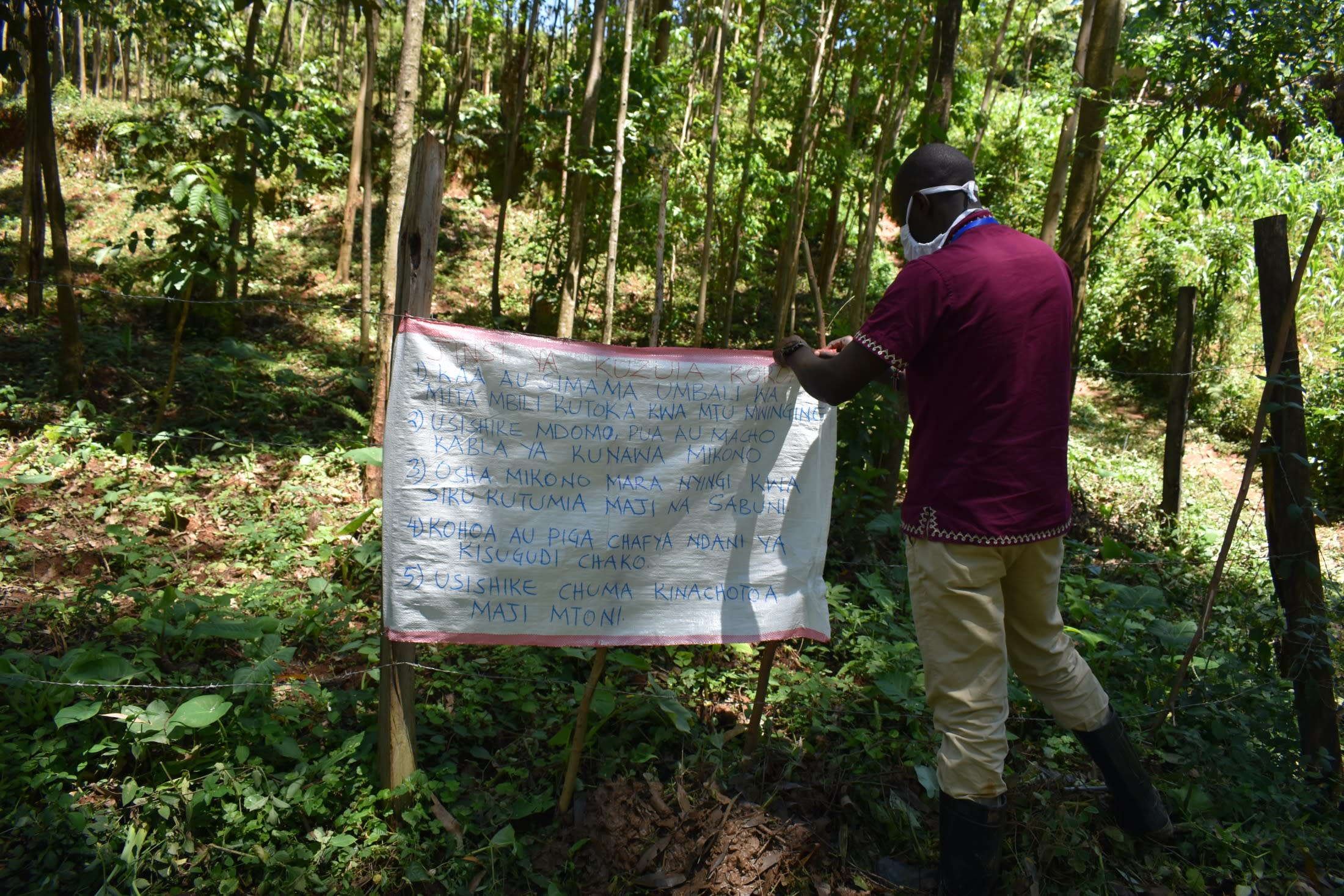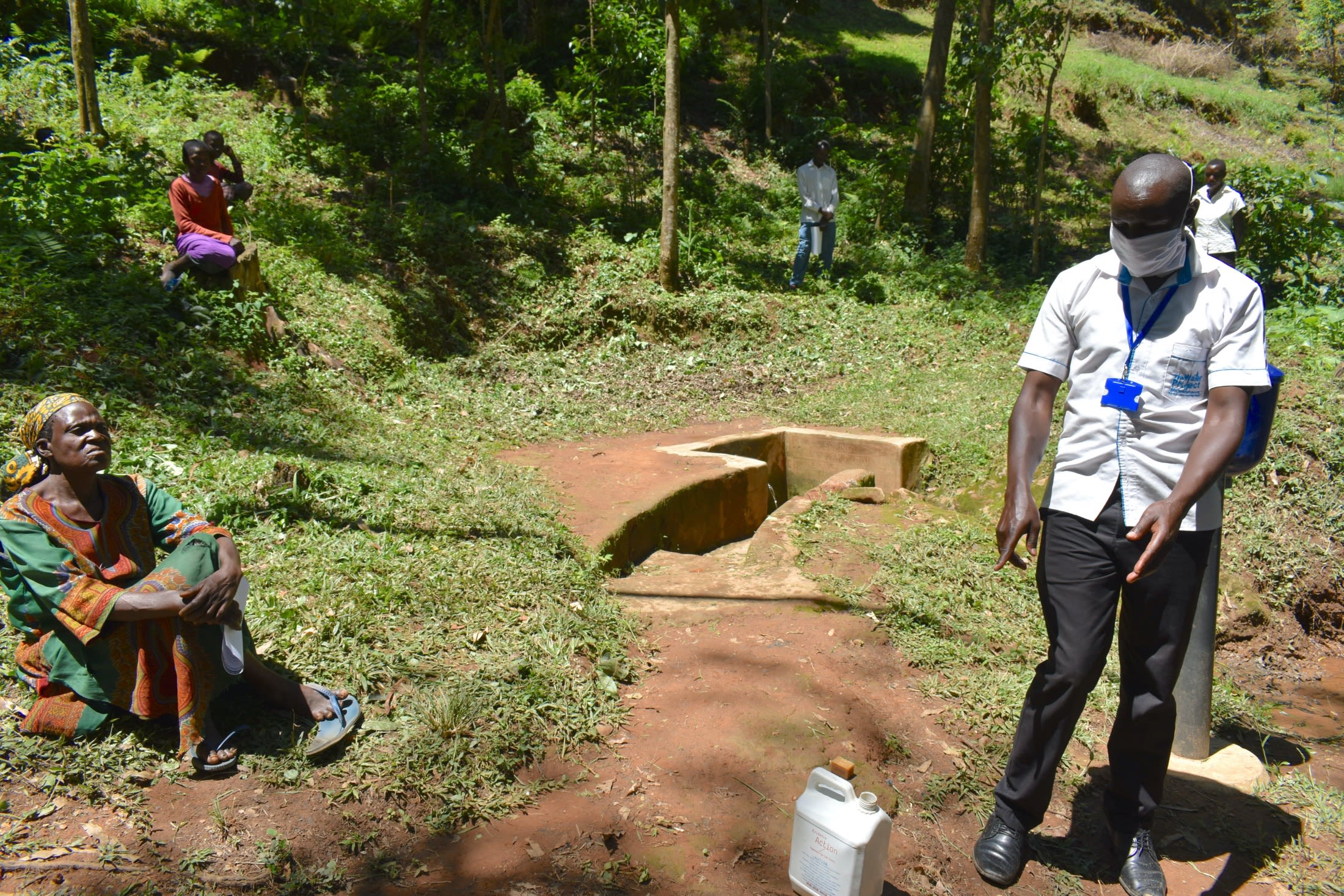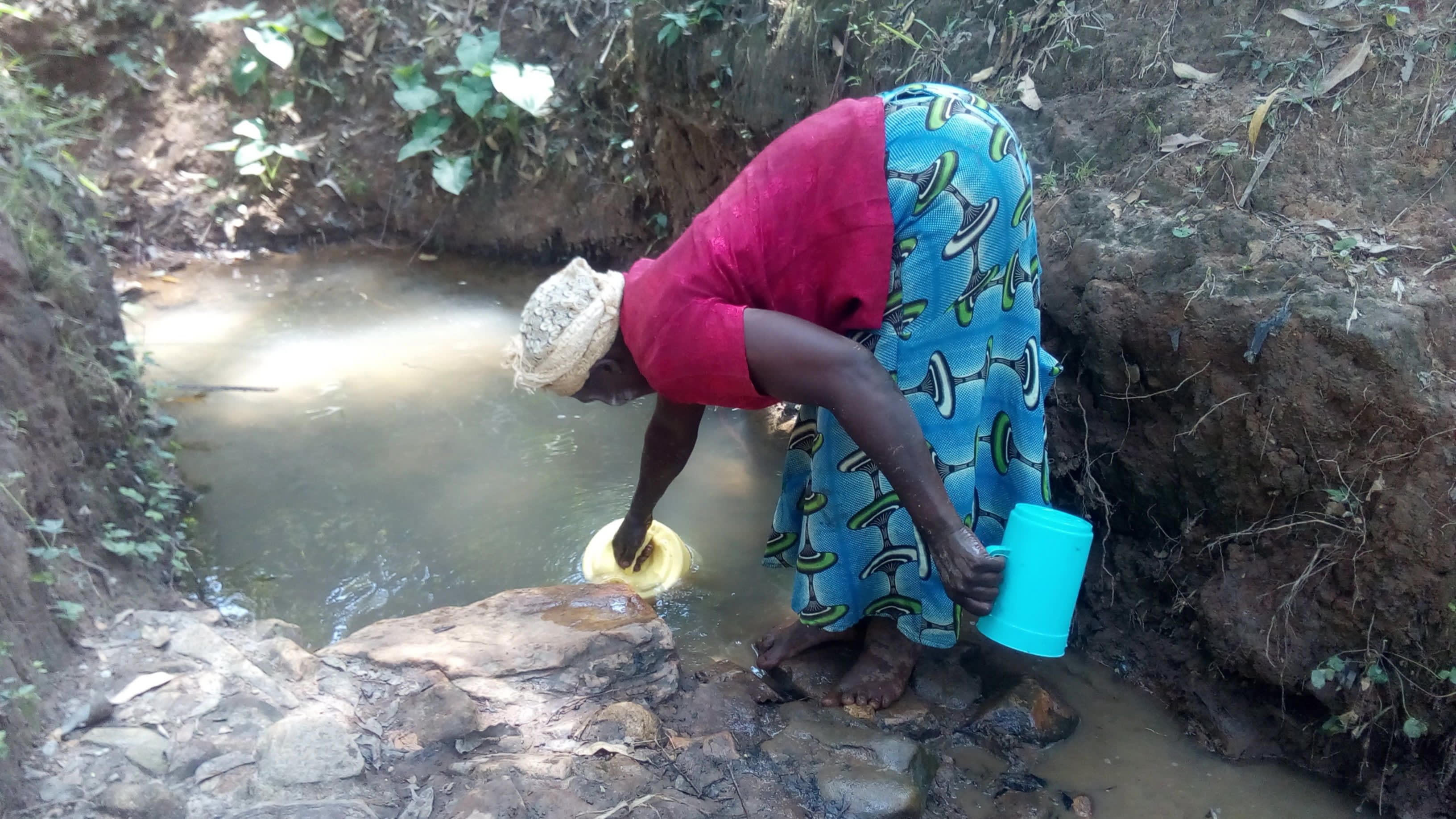This project is a part of our shared program with Western Water and Sanitation Forum (WEWASAFO). Our team is pleased to directly share the below report (edited for clarity, as needed):
Welcome to the Community
Welcome to this village of 570 residents who begin their day at 6am by heading out to their farms. Many engage in small-scale dairy farming, raising poultry and growing bananas. Sugarcane is also planted as a cash crop to be sold to factories and markets. Their subsistence farming consists of vegetables, maize, beans and ground nuts.
The Maragoli tribe have lived here peacefully without internal conflict amongst themselves using water from this unprotected spring for a long period of time.
Water Situation
Saina Spring looks like it's just a pool of water at the bottom of a slope. It is contaminated by surface runoff, improper waste disposal, bacteria and soil erosion. During a visit to the spring, a WEWASAFO staff even saw rotten blue gum leaves inside the water. Also, when one of the community members was fetching water, drops of water were falling on her bare feet and dropping back into the spring. The children have been suffering from coughs, stomachaches and rashes on their skin which result from bathing with water from this unprotected spring.
The shortage of safe water results in many people spending resources to acquire it from vendors. When they cannot, there are waterborne diseases to deal with.
"Many people in this area fall sick, but do not seek medical attention. Most of these people rely on painkillers as the only way of controlling unknown sickness as ailing people do not go for medical test(s) to find out the cause of (an) ailment," reported Albert Mahadana Anyika, a community farmer.
(Editor's Note: While this many people may have access on any given day, realistically a single water source can only support a population of 350-500 people. This community would be a good candidate for a second project in the future so adequate water is available. To learn more, click here.)
Sanitation Situation
Over 75% of the households here have pit latrines which are semi-permanent, made of wood floors, walls of mud, old iron sheet roofs and doors often made of old bedsheets or iron sheeting. They are often rickety structures that offer little privacy and can become unsafe after years of use. The wood floors cannot easily be cleaned and decay to the point of collapsing, oftentimes while in use.
Many households have dish racks and clotheslines, although most are of a rudimentary nature. Many people heap up their solid garbage and allow it to decompose, and later use it as organic farm manure. Some households have hand-washing stations, but most do not.
Plans: Hygiene and Sanitation Training
Community members will attend hygiene and sanitation training for at least three days. This training will ensure participants are no longer ignorant about healthy practices and their importance. The facilitator plans to use PHAST (Participatory Hygiene and Sanitation Transformation), CLTS (Community-Led Total Sanitation), ABCD (Asset-Based Community Development), group discussions, handouts and demonstrations at the spring. Training objectives will be on how to access safe clean drinking water, to educate the community on proper hygiene and sanitation practices, to have safe and sound sanitation facilities and to also provide a wider knowledge on health issues affecting them.
Plans: Sanitation Platforms
On the final day of training, the Elunyu Village members will select five of their families to benefit from new latrines. The five families must prepare by sinking a pit over which the sanitation platforms will be placed.
Plans: Spring Protection
Saina Spring could well serve the entire community of 80 households, since it does not dry up - even during times of drought.
The community will provide the local materials such as crushed rocks and gravel, clean sand, poles for fencing, unskilled labour and accommodation and food for the work team.
Protecting the spring will ensure that the water is safe, adequate and secure, and allow the community to invest more of their time and energies in economically productive activities as well as family relationships.
"Our spring has been in existence for over 70 years," said Albert Mahadana. "We have been trying to reach out to our elected leaders to try and help us protect our spring... Thanks to you for considering our unprotected spring from among the many needy communities."



 Rehabilitation Project
Rehabilitation Project





































